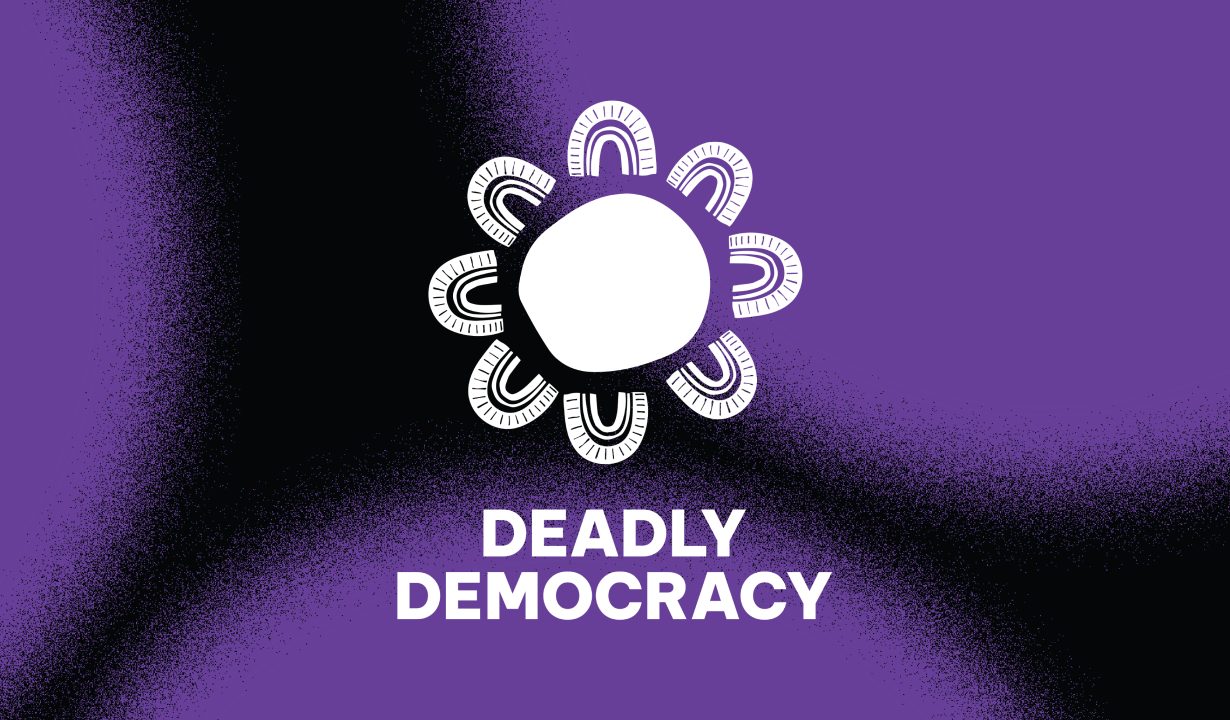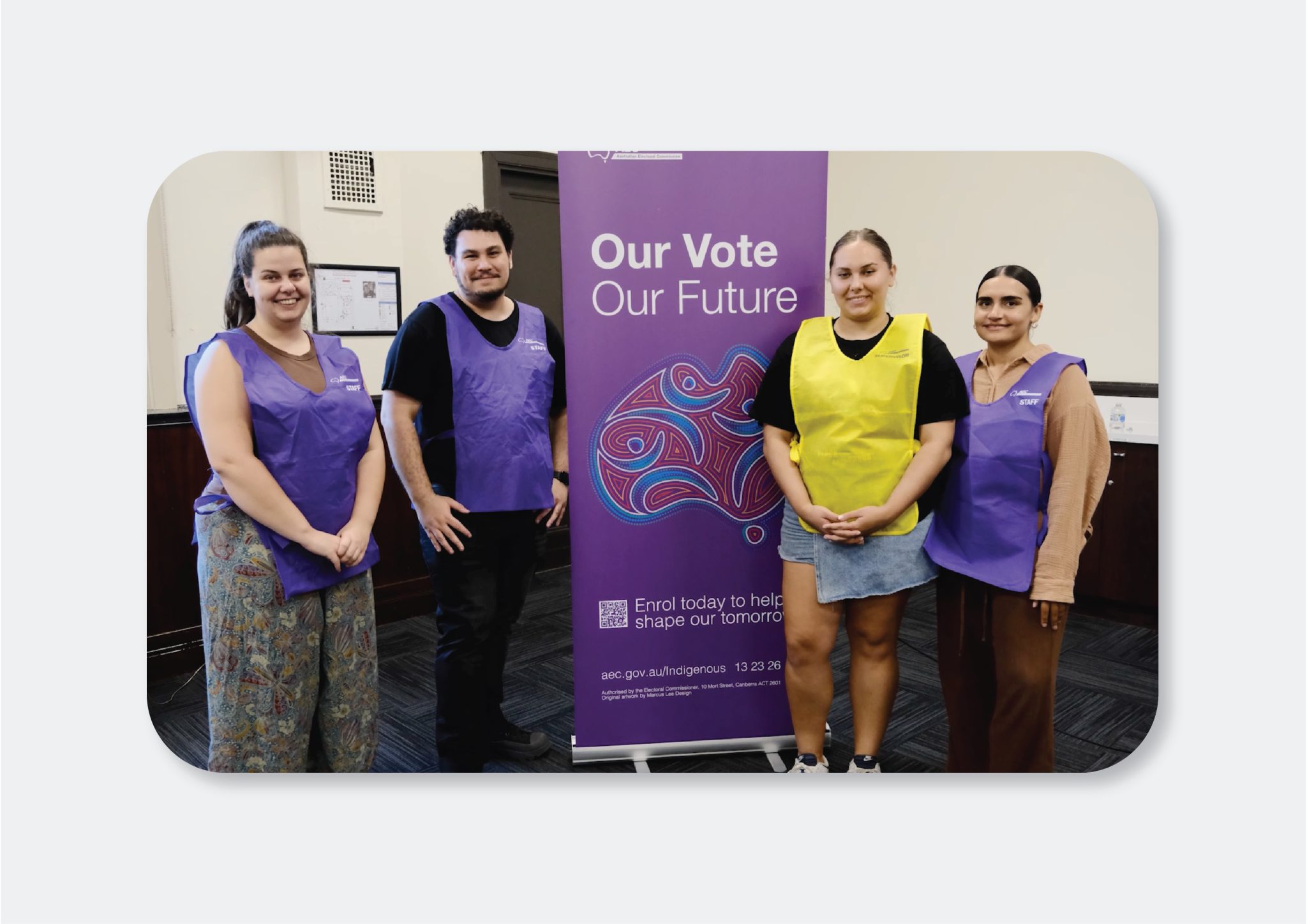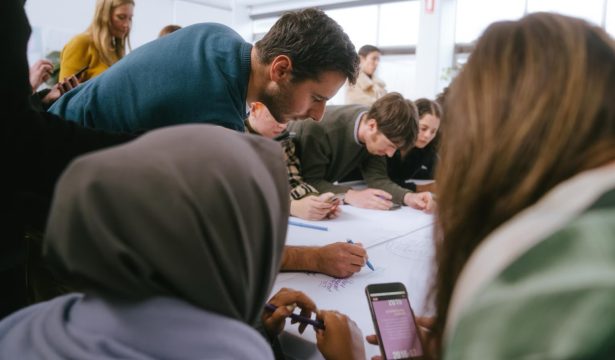
Deadly Democracy – 2025 Good Design Award of the Year
- Published on: 21 October 2025
Share
THE AUSTRALIAN GOOD DESIGN AWARD OF THE YEAR IS HISTORICALLY AWARDED TO ONLY ONE EXEMPLARY PROJECT ACROSS ALL DESIGN DISCIPLINES AND CATEGORIES.
IT REPRESENTS THE VERY PEAK OF DESIGN EXCELLENCE, INNOVATION AND IMPACT.
IN 2025, THE JURY FOUND TWO PROJECTS DESERVING OF THIS TOP ACCOLDADE – DEADLY DEMOCRACY AND HULLBOT.
When First Nations young people lead, entire communities benefit. Deadly Democracy, a partnership between YLab – a youth sector consultancy – and the Australian Electoral Commission (AEC), was created to boost civic participation and deepen understanding of democracy among First Nations youth.
The program trained paid participants as community leaders and facilitators, empowering them with the skills, confidence and knowledge to design and lead civic engagement initiatives within their own communities.
Deadly Democracy was recognised with the Good Design Australia’s highest honour, the 2025 Australian Good Design Award of the Year. We spoke with Brigid Canny, YLab CEO, for a behind-the-scenes look at the project. She also highlighted the dedicated YLab Team who brought Deadly Democracy to life, including:
- Angel Towney, She/Her, Wiradjuri woman
- Kelsey Dole, She/Her, Ngiyampaa woman
- Will Austin, He/Him, Peek Woorroong Keerraay Woorroong man
- Jannah Firebrace She/Her, Gunditjmara and Yorta Yorta woman
- Mercedes Kirwin She/Her Wakaman woman
- Chelsea Lang, She/Her
- Damon Chester, He/Him
- Ruby Healey, She/Her
Dive into the incredible co-design journey behind Deadly Democracy, including defining features such as lived experience-led co-design, paid employment, and strong community partnerships.

Deadly Democracy – Winner of the 2025 Australian Good Design Award of the Year. Image: Supplied
A values-led approach
YLab and the AEC began conversations about Deadly Democracy in 2020. From the beginning, it was clear that the civic education program would require robust co-design processes.
Brigid reflected why YLab was the right fit for the project.
“Part of why YLab was an attractive partner is that we had a First Nations team embedded in our organisation.
“They brought both professional expertise in working with government and partners, and lived experience as First Nations young people, providing this depth of knowledge around cultural safety, relationships, and legitimacy with the young people we were working with,” Brigid said.
YLab prioritises their values from day one of project discussions. It’s why they’re discerning with the work that they take on, and why they feel they stood out to the AEC.
“I think the AEC were pleased that we reconsidered the original scope of work. They initially wanted us to lead all delivery, however, we consider ourselves an ally organisation because we’re not Aboriginal-owned.
“We emphasised the importance of partnering with local organisations. Every language and cultural group is unique, and local partners – such as Umeewarra Media – can sustain relationships long-term.
“Our approach was about going to where young people are and giving them a significant role in shaping the program, rather than bringing them out of their communities.”
How past experiences sparked new ideas
YLab looked back on previous civic education programs, which hadn’t achieved the desired outcomes. Drawing on their findings, they dove into new ways to embed design participation. Every choice aimed to support First Nations young people to engage confidently and meaningfully in democracy.
“The AEC were really self-aware in recognising there was a need to rethink First Nations engagement.
“We wanted to avoid the fly-in, fly-out model which consultants often rely on with remote communities, which can often leave them feeling disillusioned.
“Alternatively, it’s quite common in First Nations or youth-focused programs for organisations to think, ‘Let’s bring young people to the city,’ which can mean conforming to a metropolitan, Western way of working.
“We were aware that First Nations young people thrive when they’re in their own context and community. We wanted to ensure their knowledge and lived expertise was legitimised. Our question was always: how might we use those strengths and ensure the program is embedded in community?” Brigid shared.
The power of paid employment
One of the defining elements of YLab’s approach was paid employment of participants. This not only ensured First Nations young people were shaping the delivery of the program, but highlighted the importance of reciprocal co-design.
“YLab has been operating for around 10 years, and we’ve always had youth employment at the centre of our model. If we’re engaging young people, we should also be building their capability and paying them for their time, so they’re better off from the experience. It’s about not being extractive.
“Paying participants ensures they can prioritise this work without sacrificing paid employment elsewhere. It also legitimises cultural work as professional work, a core value for us. Finally, it allowed us to support participants to thrive in meaningful roles.”
Brigid explained how paying participants not only supports the goals of the Deadly Democracy program, but also champions a wider mission to close the youth employment gap.
“Youth unemployment remains disproportionately high in First Nations and culturally and linguistically diverse communities, so this approach helped bridge that gap by offering young people paid, entry-level experience based on their lived expertise rather than prior work history.
We believe lived expertise is worth paying for. Too often, consultations or co-design processes ask young people and communities to give their insights without reciprocity. For us, reciprocity is always at the centre of our work with young people and First Nations communities.”

Deadly Democracy – Winner of the 2025 Australian Good Design Award of the Year. Image: Supplied
Co-designing with First Nations young people
From creation through to delivery, Deadly Democracy is rooted in co-design. Brigid explained how YLab adapted their existing co-design framework to achieve better outcomes.
“Firstly, it’s important to acknowledge that I’m not Aboriginal or Torres Strait Islander, and some of our team aren’t either. So everything I share here comes from what I’ve learnt from my First Nations colleagues and their guidance.
“We’re conscious that as an organisation we don’t always get it right, but we’re committed to constantly learning and improving our practice of allyship.
“We’re always mindful that co-design can sometimes be used superficially to appear collaborative when decisions have already been made. True co-design means genuinely handing over decision-making power. It’s not a one-size-fits-all tool. It needs to be used thoughtfully, with awareness of context, limitations, and strengths.
“Traditionally, YLab’s co-design model follows three broad stages – understanding the problem, designing solutions, and scaling for impact. But in a First Nations context, YLab’s co-design approach is much less linear and more circular.
“A yarning, fluid, open-ended conversation proved to be a far more effective and culturally grounded way to co-design with First Nations young people.
“We also noticed that many participants expressed themselves through creativity and cultural practices, like weaving and craft, rather than traditional workshop methods such as post-it notes.”
YLab also stepped away from the Western approach of separating young people into standalone engagement sessions.
“In many First Nations communities that can feel inappropriate. First Nations cultures are so much more intergenerational. We worked with Elders who were as invested in youth issues as young people themselves. So in some workshops, we involved both Elders and young people together.”
Diverse workshops for greater engagement
YLab’s usual approach to workshop delivery is two-tiered: a core group of young people are employed and trained to lead facilitation with our mentorship, and then the young people engage a broader cohort in their communities.
“We want to leave capacity behind whenever we work in a community”, Brigid said.
When it came to Deadly Democracy, each young person designed their own engagement. Their methods ranged from yarning circles to sports. This approach also allowed for a deeper understanding of the barriers to participation for First Nations young people, which was incredibly valuable for the AEC.
“The idea was for them to decide what would best engage their peers. The focus was always on increasing young people’s civic participation and understanding of democracy – why voting matters, how to vote, and what happens if you don’t – without pushing any political agenda. Because of the history of colonisation and mistrust in electoral systems, it was essential that First Nations young people led this work themselves.”
As the world changed, so did the workshops. In 2021, the COVID-19 pandemic meant the program needed to be delivered through a hybrid model. YLab found this made the program more accessible for young people who were remote, neurodiverse, or preferred online engagement.
Later, the 2023-24 program ran during the leadup to the 2023 Australian Indigenous Voice referendum. This sensitive time required an additional focus on wellbeing for both First Nations YLab team members and participants.
“Many workshops included education about the referendum and the Constitution, always handled with care. It was a tense time, and we had to ensure facilitators – who were young Aboriginal people themselves – felt supported through that cultural and emotional load.”

Deadly Democracy – Winner of the 2025 Australian Good Design Award of the Year. Image: Supplied
Relationships built on trust
YLab co-delivered the program with local Indigenous organisations, opening the door to connection through an existing First Nations organisation that potential participants know and trust.
“As an ally organisation, we believe it’s essential to work alongside local and subject-matter experts, especially in communities that aren’t our own. Each community is unique, and local Indigenous organisations have the relationships, context and cultural knowledge needed to make engagement meaningful and sustainable.
“Co-delivering ensured the work wasn’t extractive or “fly-in, fly-out”. It helped build lasting connections between young people and organisations that could continue supporting them beyond the program.
“Partner selection was a relational process. In some cases, we built on existing AEC partnerships. In others, we reached out directly to local youth centres or community groups to understand who was already trusted and active. This approach also allowed us to direct funding to local organisations, strengthening their capacity and recognising the critical role they play in their communities.”
The secret to strong partnerships
Brigid had parting words for ally organisations like YLab. Partnerships with First Nations organisations are fundamental. However, they must be relational and reciprocal, never extractive.
“Too often, partnerships are formed just to meet procurement requirements and get contracts. Then, there’s not enough care or courage in the way that the work is designed and co-delivered.
“We pride ourselves on holding ourselves accountable. If we are working with First Nations Communities, we need to trust and empower local community partners and act as a backbone of support rather than the lead.”
Deadly Democracy has created culturally safe spaces for leadership, learning, and enduring connections. Good Design Australia congratulates and thanks YLab and the AEC for creating an exceptional example of co-design with lasting outcomes and meaningful impact.


